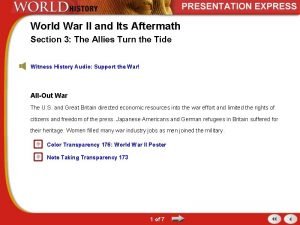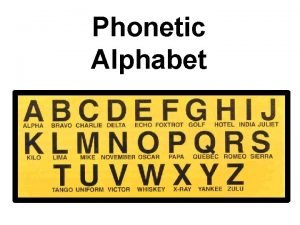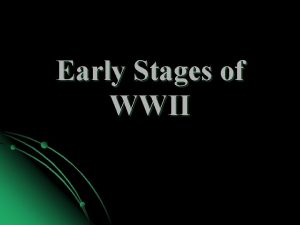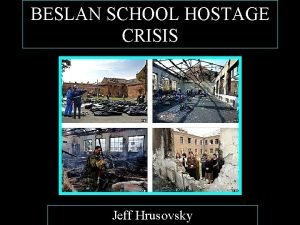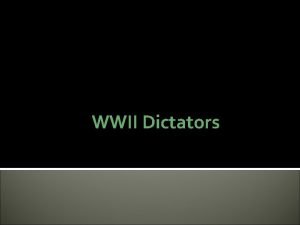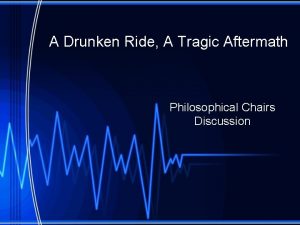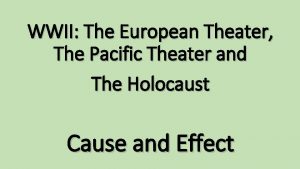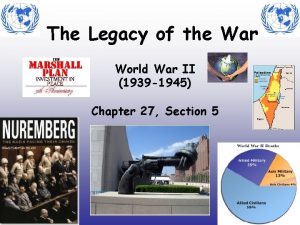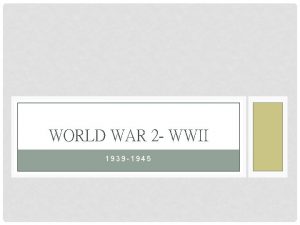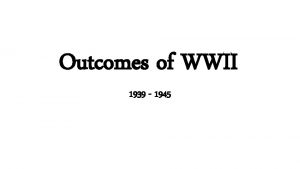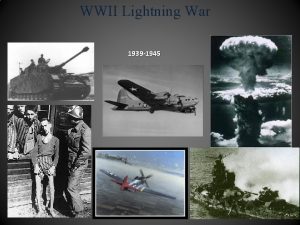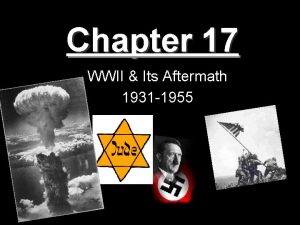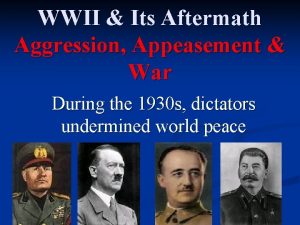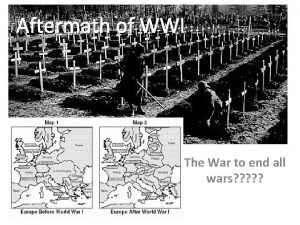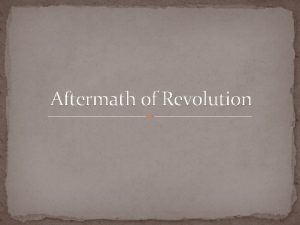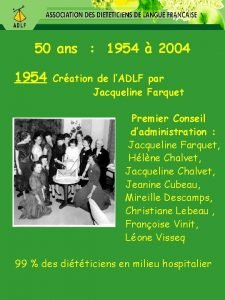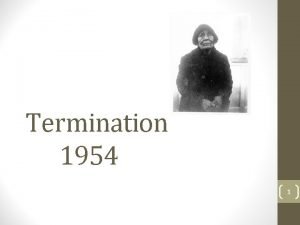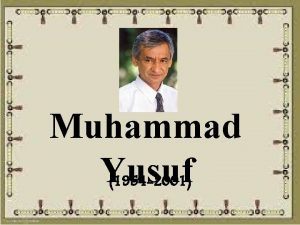Minorities WWII and its Aftermath 1945 1954 Part














- Slides: 14

Minorities: WWII and it’s Aftermath (1945 -1954)

Part I – Mexican American’s in the Military • Why would African Americans, Mexican Americans/Latinos, Japanese Americans serve in the military voluntarily or involuntarily, given the conditions each group faced during the time period?

A Note on Source All the information in this Power. Point can be found in the book, “Mexicanos, Second Edition: A History of Mexicans in the United States” by Manuel Gonzales.

Mexicanos in the Military • During WWII, the military counted all Latinos as “whites, ” so completely accurate numbers about participants in the war is unavailable. • Estimates in U. S. military numbered between 250, 000500, 000. During WWII, Mexican-Americans served in all branches of the military.

Mexicanos in the Military • While most Mexicano soldiers were drafted, the volunteer rate was likely much higher than the population at large. • Mexicanos were the most highly decorated ethnic group in the U. S. Armed forces. The above picture is from the Vietnam War. Very few group pictures of Mexican-Americans were taken during WWII.

Mexicanos in the Military • Fought in WWII and likely served in the Pacific theater. • Latinos composed a huge proportion of the New Mexico National Guard, which was stationed in the Philippines on the eve of WWII. • Hundreds of Mexicano and Latino soldiers are thought to have died in the Bataan Death March. The Bataan Death March was approximately 70 miles and took roughly five days to complete. At least 600 Americans died during the march along with thousands of Filipinos.

Famous Mexican-American Soldiers • Made his mark during the Battle of Saipan in 1944. • Born in East Los Angeles. Raised by a Japanese American family after he turned twelve. • Twice wounded by machine gun fire, he killed thirty-three enemy soldiers. • Using his knowledge of the Japanese language, he single-handedly captured more than 1500 enemy combatants. This is the most prisoners ever taken by one soldier in the entire history of the military. Guy Louis Gabaldon

• http: //www. thirteen. org/programs/latino-americans/latinoamericans-guy-gabaldon/

Famous Mexican-American Soldiers • He never fully received the recognition that was due during his lifetime. • He was outspoken and critical of the military. • Although he was recommended for the Medal of Honor he was denied it. • Latino civic and veterans’ groups have been fighting to get him a posthumous Medal of Honor ever since. Guy Louis Gabaldon

Famous Mexican Soldiers • Among the many heroes of the final assault on Germany was Medal of Honor winner Sergeant Jose M. Lopez (19102005). • A machine gunner, Lopez killed more than 100 Germans in the Krinkelt Wald, in Belgium, on December 17 th, 1944. • Lopez has the distinction of having killed more enemy soldiers than any other American in WWII. At the Veterans Park in Brownsville, Texas, is a statue of Sgt. Jose M. Lopez carrying a Browning machine gun.

Company Z in the Battle of Sicily • Company Z of the 141 st Regiment of the 36 th Division consisted almost entirely of Tejanos out of El Paso. They fought valiantly in the Battle of Sicily. • Lieutenant Gabriel Navarette and Sergeant Manuel S. Gonzales earned the Distinguished Service Crosses in the Italian campaign. The Distinguished Service Cross is the second highest award that can be given to a member of the U. S. Army. It is given for extreme gallantry and risk of life in actual combat with an armed enemy force.

The Effect of WWII on Mexican-Americans • “These Chicanos were different from the Mexican-Americans that we had known before we left the States and went overseas. Although still full of fun and deviltry as ever, they now were well seasoned and experience American soldiers. No longer were we chided and sunned by other GI’s and Army officers. Where we had been held in contempt by others who disliked us because of our constant Spanish chatter or our lax [sic] in military discipline, we were now admired, respected, and approved by all those around us including most of our commanding officers. ” • Historian, Raul Morin

Americans and WWII • https: //www. youtube. com/watch? v=7 Su 0 Jj. IYTZY

Japanese Americans • https: //www. youtube. com/watch? v=mg 9 Rwe 69 hao
 World war ii and its aftermath section 1 quiz
World war ii and its aftermath section 1 quiz Grandfather clause reconstruction
Grandfather clause reconstruction What is dysfunctional conflict
What is dysfunctional conflict Military words for letters of the alphabet
Military words for letters of the alphabet Advances in technology during wwii
Advances in technology during wwii Nye committee definition
Nye committee definition Beslan school siege aftermath
Beslan school siege aftermath Wwii picture
Wwii picture Wwii picture
Wwii picture A drunken ride a tragic aftermath
A drunken ride a tragic aftermath Ww2 study guide answer key
Ww2 study guide answer key Effects of wwii
Effects of wwii Wwii show
Wwii show Wwii
Wwii Causes of wwii
Causes of wwii
